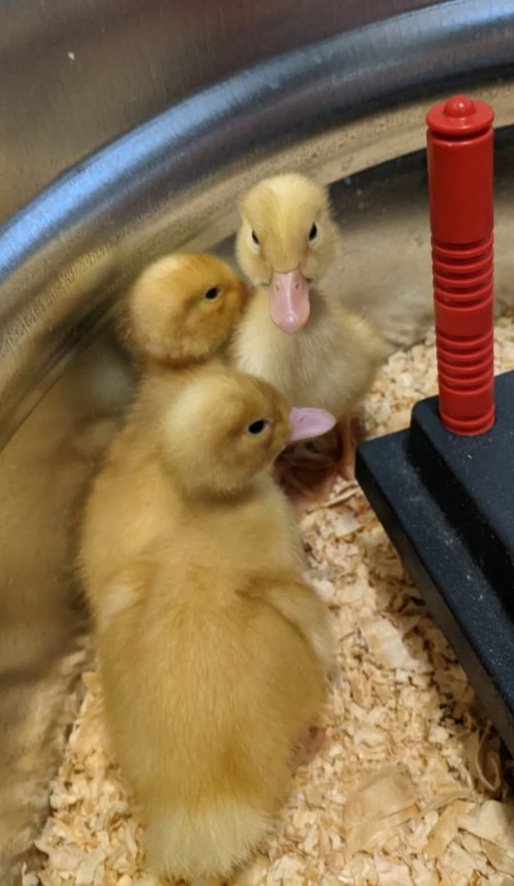Duckling Gender & Flock Integration: What to Know and When to Act
🦆 How to Tell Duckling Gender & Safely Introduce Them to Your Flock
🚻 How to Tell if Your Ducklings Are Male or Female (And When You Can Know)
This is one of the most common questions duck parents ask—and unfortunately, the answer is: you're going to have to be patient. There are ways to tell duckling gender, but most of the early methods are either risky, unreliable, or not breed-universal.
🐣 Can You Tell Duckling Gender at Hatch?
Yes… and no.
Technically, ducklings can be sexed at hatch using a method called vent sexing, which is what hatcheries use when you order specific genders. It involves examining the duckling’s vent (aka cloaca) for subtle differences in anatomy.
BUT—and this is a big, bold DO NOT TRY THIS AT HOME—vent sexing is tricky, requires training, and can injure your duckling if done wrong. Unless you're a professional or a trained breeder, skip this one and try a less risky method.
⏱️ So When Can You Tell Duckling Gender?
Most ducklings can be reliably sexed between 4 and 8 weeks old, though the timing varies depending on the breed and how quickly your birds develop.
🔊 1. The Voice Test (4–8 Weeks)
This is hands-down the easiest and most reliable way for backyard duck keepers to tell gender—and it doesn’t require touching any vents, thank goodness.
Females develop a loud, clear “QUACK” that sounds exactly like you’d expect.
Males have a softer, raspy, or hoarse-sounding quack—think frog voice or squeaky whisper.
🎨 2. Feather Color or Pattern (Breed-Specific)
Some breeds, like Mallards, Rouens, and Welsh Harlequins, can be sexed by their feather patterns as they mature. Just be sure you're familiar with what those patterns mean for your breed.
🌀 3. The Drake Feather (8–12 Weeks)
Many male ducks grow a signature curled tail feather, often called the drake curl, between 8–12 weeks.
📏 4. Size & Behavior (Kinda Reliable, Kinda Not)
Sometimes you’ll notice that one duckling is bigger, walks more upright, or is a little more dominant—that’s often a drake. Others may be rounder, lower to the ground, and way louder—that’s usually a hen. Use this method cautiously.
🧬 5. Auto-Sexing Breeds (Day 1–2 Only!)
Some breeds—like the Welsh Harlequin—can be told apart at hatch based on beak or feather color, but only in the first day or two.
✅ So… Which One Should You Trust?
In our experience, the voice test is the best combination of safe, accurate, and beginner-friendly. If you want a second opinion, wait for the drake curl or breed-specific feather patterns.
🧼 Introducing New Ducklings to an Existing Flock: When and How to Do It Safely
So, you’ve moved your babies outside to their forever home—but what if that home is already spoken for?
⏳ When Can You Introduce Ducklings to Older Ducks?
Let’s start with the golden rule: do not introduce ducklings to adults too early. Ducklings should be **fully feathered and close to adult size—usually around 8 to 10 weeks old—**before they mingle with the big birds.
📋 Step-by-Step: How to Introduce New Ducklings to Your Flock
🐣 Step 1: Raise Ducklings Separately
Keep them in a brooder until at least 8 weeks old.
👀 Step 2: Start Visual Introductions (6–7 Weeks)
Use a separate pen next to the flock where they can see each other but not interact.
🐾 Step 3: Supervised Playdates in Neutral Territory (8–10 Weeks)
Begin short, supervised visits in a neutral space.
🏠 Step 4: Full Integration (10–12 Weeks)
Once they’re nearly full-grown and seem accepted, move them in full time.
🦆 Tips for Duck-Only Flocks
Females may chase or nip to establish dominance.
Drakes can be aggressive—wait until ducklings are at least 16 weeks before introducing young females.
Provide multiple food/water stations.
Create a safe space only smaller ducks can access.
🚩 Signs That Your Flock Isn’t Ready (Yet)
Constant, aggressive chasing
Injuries or feather loss
Blocking from food or water
Extreme hiding or distress
👉 If these happen, slow down and back up a step.
🐔 Got Chickens, Too?
Some chicken owners sneak new birds into the coop at night—supposedly everyone wakes up a little confused but more accepting. Try with caution.
🧘 Final Thoughts
Flock integration is a slow burn, not a sprint. But with some patience, a good setup, and lots of observation, you’ll eventually end up with one big, happy (if slightly chaotic) duck family. Or at least a tolerably civil one. Which, honestly, is just as good.


